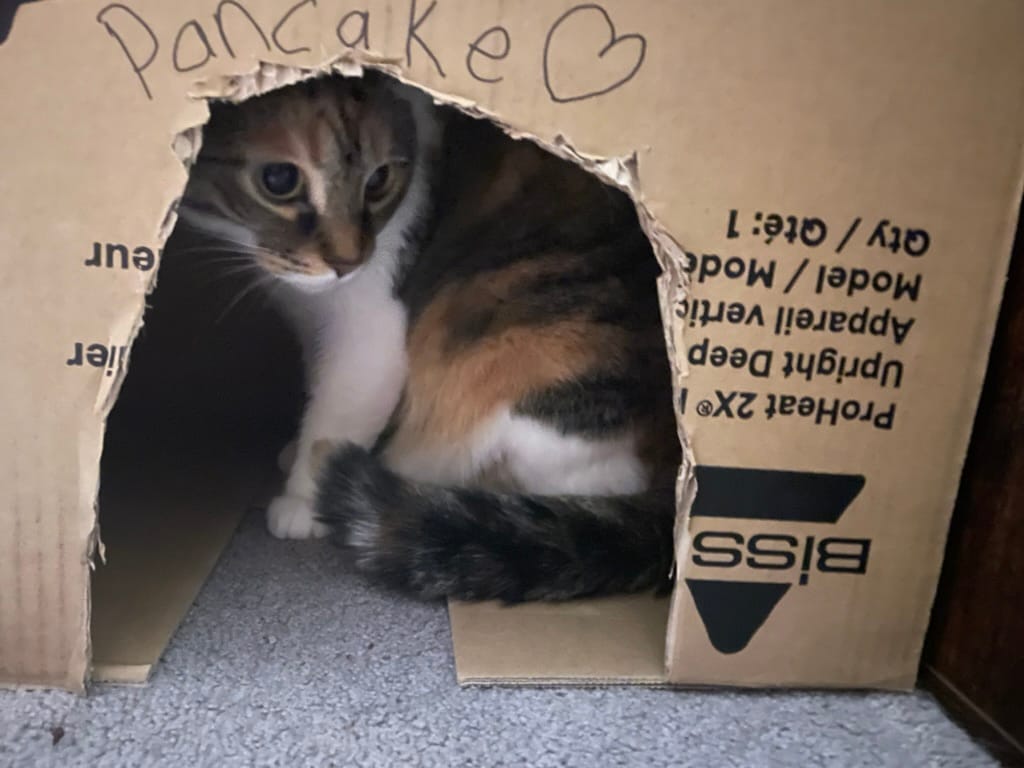Driver Journal August 2025
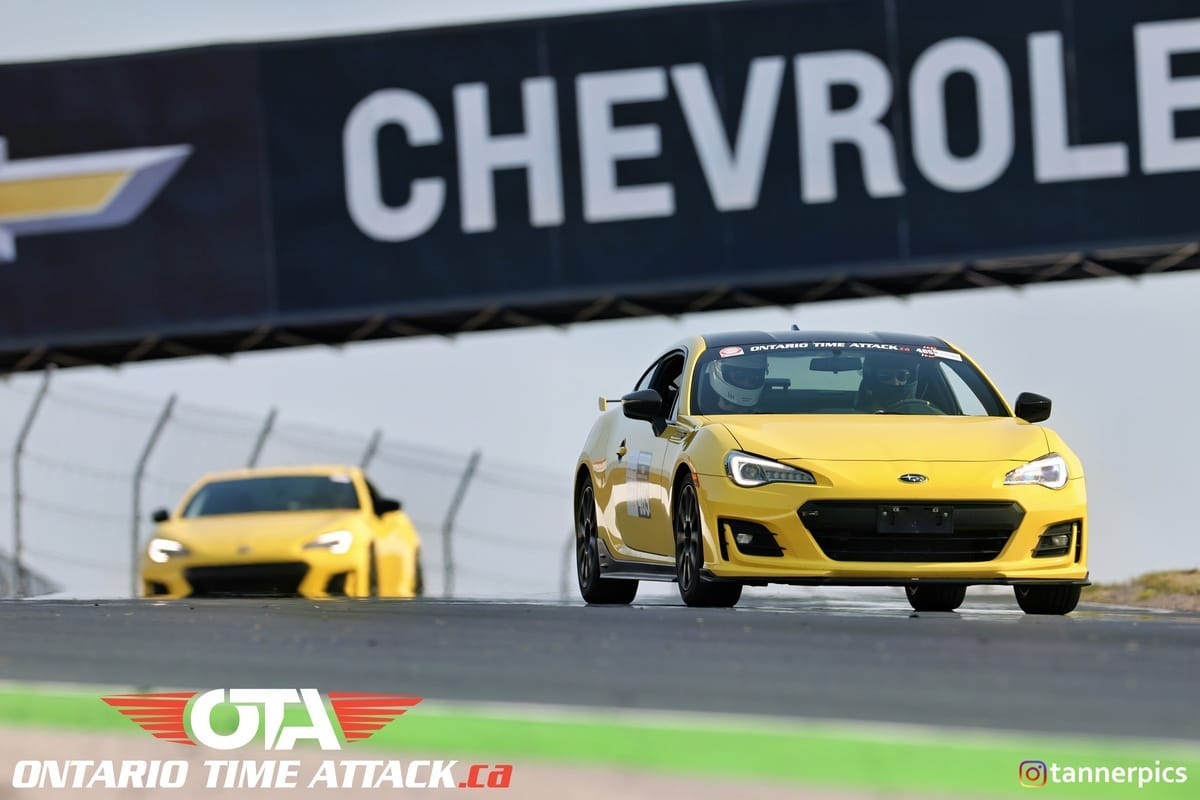
It's very likely that following this post, my entries will be scarce. I mentioned in my last post that the season is coming to an end soon, and I've decided not to force content over the off season. If I feel like I want to write, I will. If I don't, I won't. This, to me, feels like the best way to ensure the content I'm generating is genuine.
In this post, I'll be talking about my lapping sessions at the Ontario Time Attack School at Canadian Tire Motorsports Park GP track. This will focus on my own development as a driver, since I don't typically like to write in depth analysis on my students on a public forum. I have some data to share, and a new personal best lap to analyze. The day was not without it's issues though, which I'll also try to explain to the best of my abilities.
Going in to the weekend, I wasn't even sure if I was going to take the car on track. OTA offers a stipend to those who help out for the day, and I was tempted just to take that for my coaching services instead of lapping. Lapping of course would cost me money in fuel and other consumables, and I've been in penny pinching mode since June.
Of course, those reading this will know that if I had done that, there would be no this to read.
Before I get in to the data, I want to talk about what the main focus was for my day at the race track. During my first session out, the car felt perfectly fine. I felt as though I was taking it easy on it, lifting well before corners and shifting long before my shift indicator came on. But on my third lap around, I spotted the dreaded Check Engine light out of the corner of my eye.
Strangely, before I had time to look down at my dash, the light disappeared.
That's weird I mumbled to myself as I brought the car in to the pits to check it out. Everything seemed fine, so I decided it was likely nothing, and went back out for the next session. But again, a quick flash of that little orange light on my dash. This time, a second flash while I was looking right at it.
At this point I enlisted the help of our Director of Time Attack who lent me his scanning tool for me to be able to read stored codes. Which was very helpful, because there were stored codes to read.
random misfire - Nice. Very Helpful.
For a bit of context, typically a misfire code is accompanied by a cylinder number. If it had done that, then I might have been able to track down a faulty spark plug, or ignition coil, and gotten back out there to set times.
But no, all I got was random.
I explained this to one of the other competitors, and friend of mine Daniel. He also had a scanning tool, which he allowed me to borrow, that captured live data. I enlisted the help of one of the volunteer photographers, Max, to read the live misfire count on the scanner's screen while I was pushing the car on track.

This, unfortunately, yielded no usable information. It also didn't help that the check engine light did not make an appearance during my last session before lunch.
Eventually, I did manage to achieve salvation when Luke from XIII Motorsport's showed up to drop off his car for the competition the next day. In case you don't remember, it was Luke's team who took my engine apart and put it back together again last year.
Luke graciously offered to read data off his scanning tool while he sat in the passenger seat during my next lapping sessions. He obviously knew what to look for, because instead of looking at misfires, he was looking at pre-ignition, or fuel knock. (I'm still not really sure what the difference is.)
Not rod knock.
The way that I understand the situation (and I am not a technician) is that the 91 octane fuel I had put in wasn't a high enough octane for on track conditions. The car runs fine on the street on 91, but at the track, Luke told me to always run 94 or higher.
I got to the fuel pump in the paddock precisely at 3pm, which is when they close. Luckily, the operator took pity on my situation, and graciously sold me half a tank of 95 octane race gas.
As far as I could tell, this had solved my problem. Not only did the engine light stay off the rest of the day, the car felt better. It felt faster. But I have no idea if it was because by that point in the day I was exhausted and had forgotten, twice, to record data.
I explained the whole situation to a friend of mine back in Ottawa, and he told me that when he used to own a BRZ, he was sure that the car is tuned for 94 octane from factory, but would run on 91 at reduced power.
Poppycock I thought to myself. Why on earth would Subaru ship a car tuned for fuel that's only available at Petro Canada, and some Shell stations?
Well it's true, and it's written in plain English (or french in my case) in the manual. Which I should really read at some point.
Don't be like me. Read your car's manual.
1:42.24
That was my fastest lap time of the day that I recorded. The day left me genuinely curious if I would gain time going up Andretti straight now that I had my fuel issues sorted it. I have no idea exactly how much power the car pulls on 91 Octane, but I have to imagine that any amount on such a low power platform would make a difference. Unfortunately, to make a worthwhile comparison, the next time I go to the track would have to be near identical conditions, and identical setup to measure if the fuel actually made a difference.
Oh well. Onward and upward.
Speaking of setup, if you've been following along until now you know I have a proper alignment kit now, with camber adjustable top hats in the front, and lower control arms in the rear.
The actual alignment though is set up as sort of a street track hybrid, with the emphasis on street. I did this because I have no way of knowing if I will need to daily drive it this winter. It will all depend on the type of work Ill be doing.
The shop I go to doesn't have an alignment rack, they use a custom made alignment tool using grease plates and fishing like (like a proper race car.) This means I don't have a sheet. He told me the spec, but I don't remember it all.
I know that I have -1.8 degrees of camber in the front, and -1.3 degrees in the rear. I'm running a small amount of toe in on the front, and I can't remember if there's any toe in the rear. On the street, it drives like its on glass.
On the track, I noticed that the front end is noticeably more lethargic than before. I used to run -2 degrees of camber in the front, and a small amount of toe out, resulting in a more immediate turn in and responsive front end. The 0 degrees of adjustment in the rear meant that I could achieve a decent amount of slip angle.
With the current setup, the car is much less lively, but also very predictable. I felt safe, and confident the whole time, which did help me push my braking point in to 5a, which was a major problem area in my last journal post.
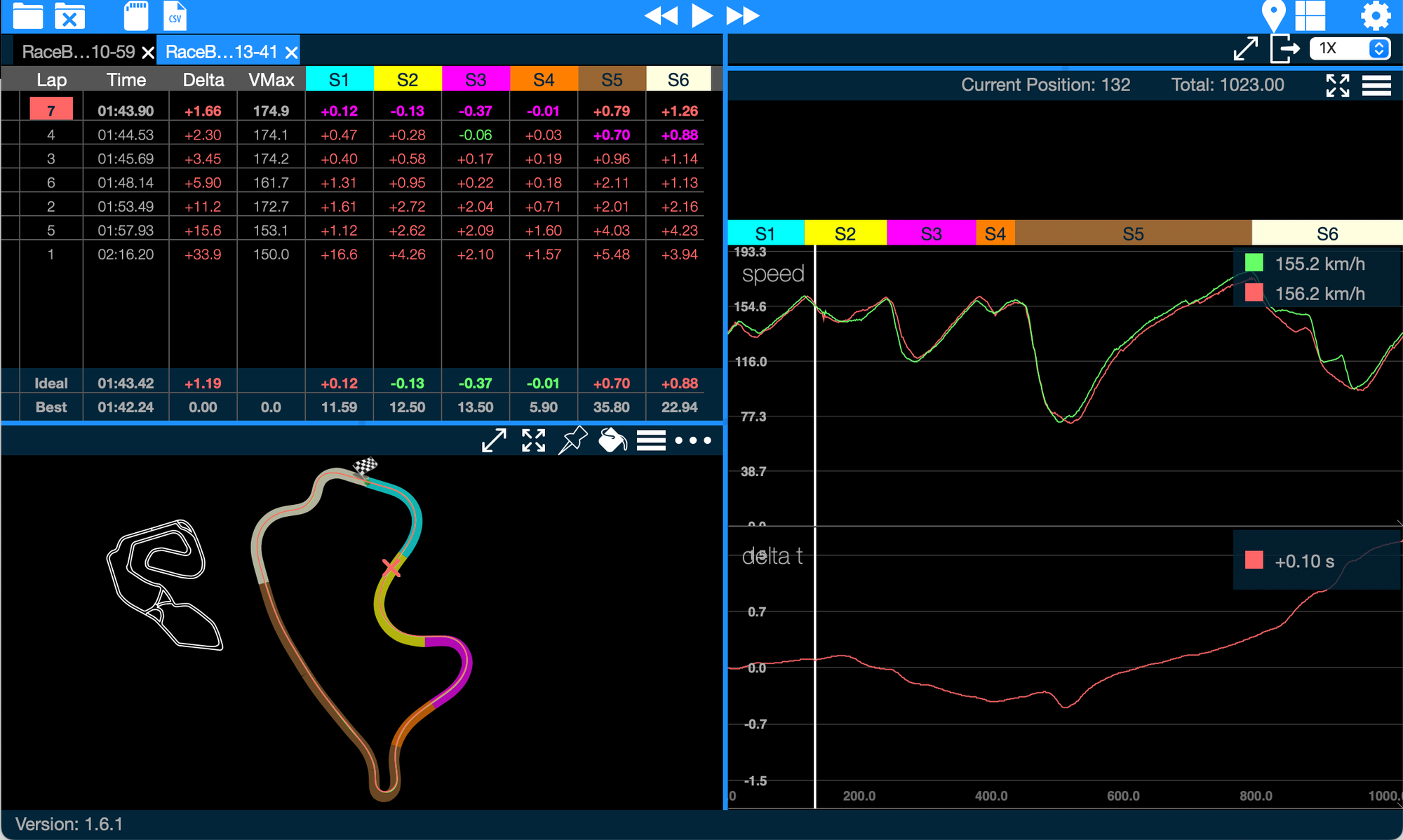
If you look at the above screenshot of my Circuit Tools Screen, you'll see the lap I talked about in my last post, and my most recent personal best lap. The comparison at the bottom uses my theoretical fastest lap, which I will ignore.
The first thing I looked at was turn 5, which Circuit Tools is calling S5. If you zoom in on the lowest point on the speed graph, you'll notice that I'm reaching my minimum speed sooner on the green lap than in the red. This seems to be resulting in me getting on the power sooner, and gaining a slight speed advantage all the way down the straight.
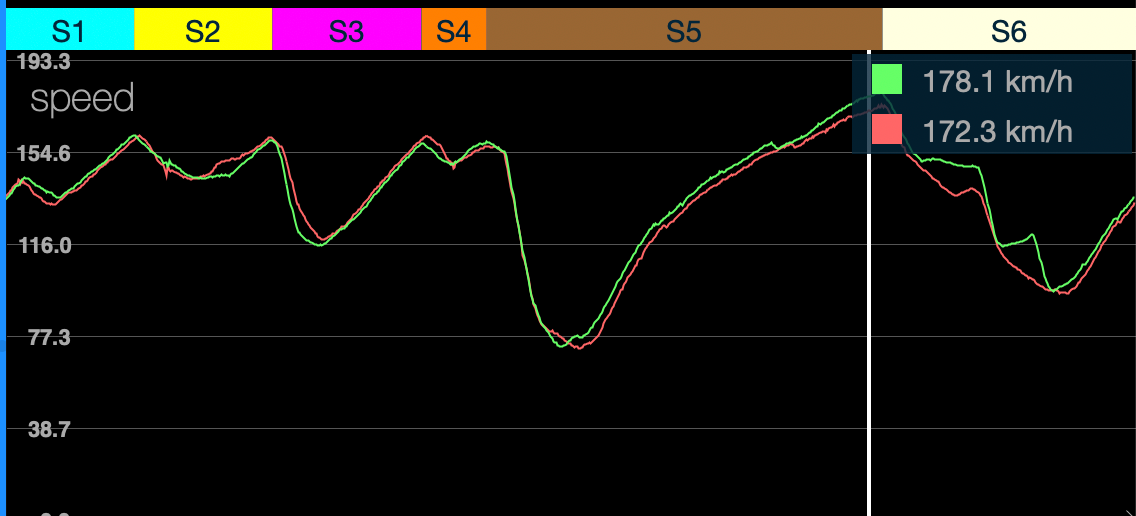
What surprised me is the big speed bumps in turn 8 and 9, at the end of the straight. Possibly due to how stable the car was on its conservative street setup, but I found I was able to carry more speed, with confidence, through the high speed esses.
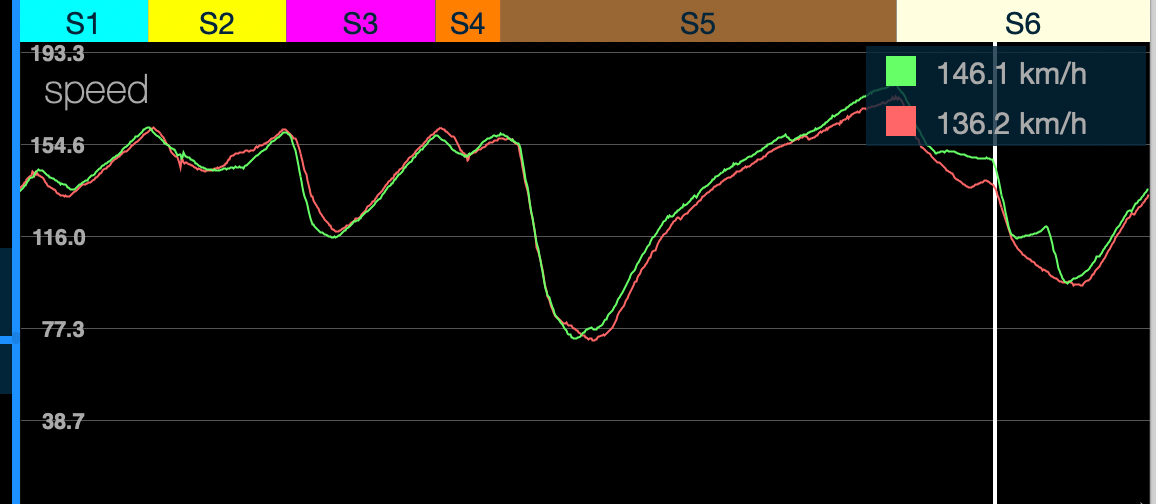
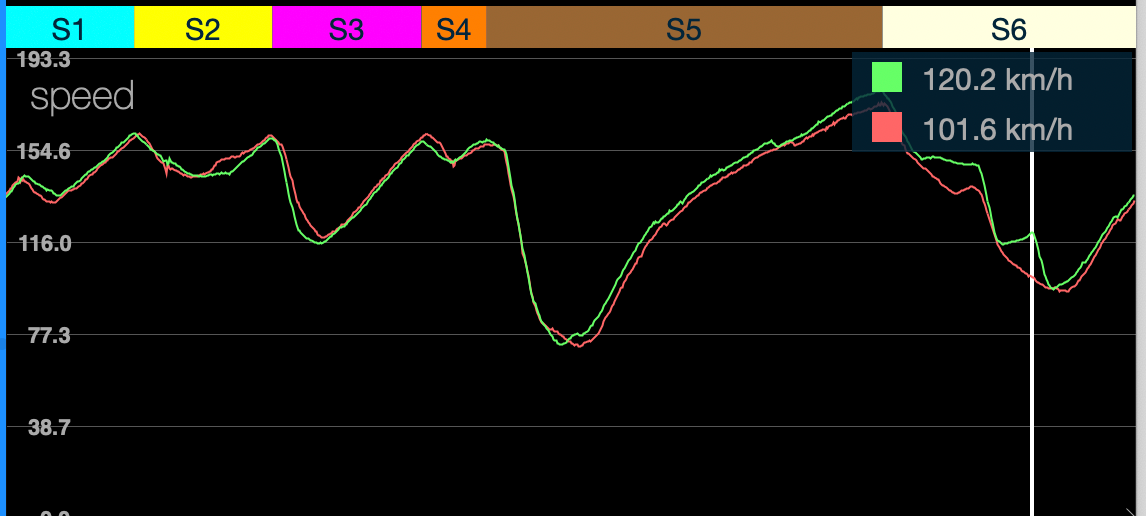
I'll be totally honest, this is not where I was expecting to gain speed on that day. I had it in my head that I was going to nail turn 5a and 5b and go sailing down the straight and make up all my lost time. This isn't what happened. Eagle eyed readers may have noticed that my new personal best lap produced slower times over the first half of the track. Possibly due to setup, possibly due to me being distracted by the issues I was having.
So how does this compare to Giuliano's faster lap in his FRS? I didn't ask him for new data, because the lap I have is still faster, despite different conditions. So I figure it's still a decent comparison.
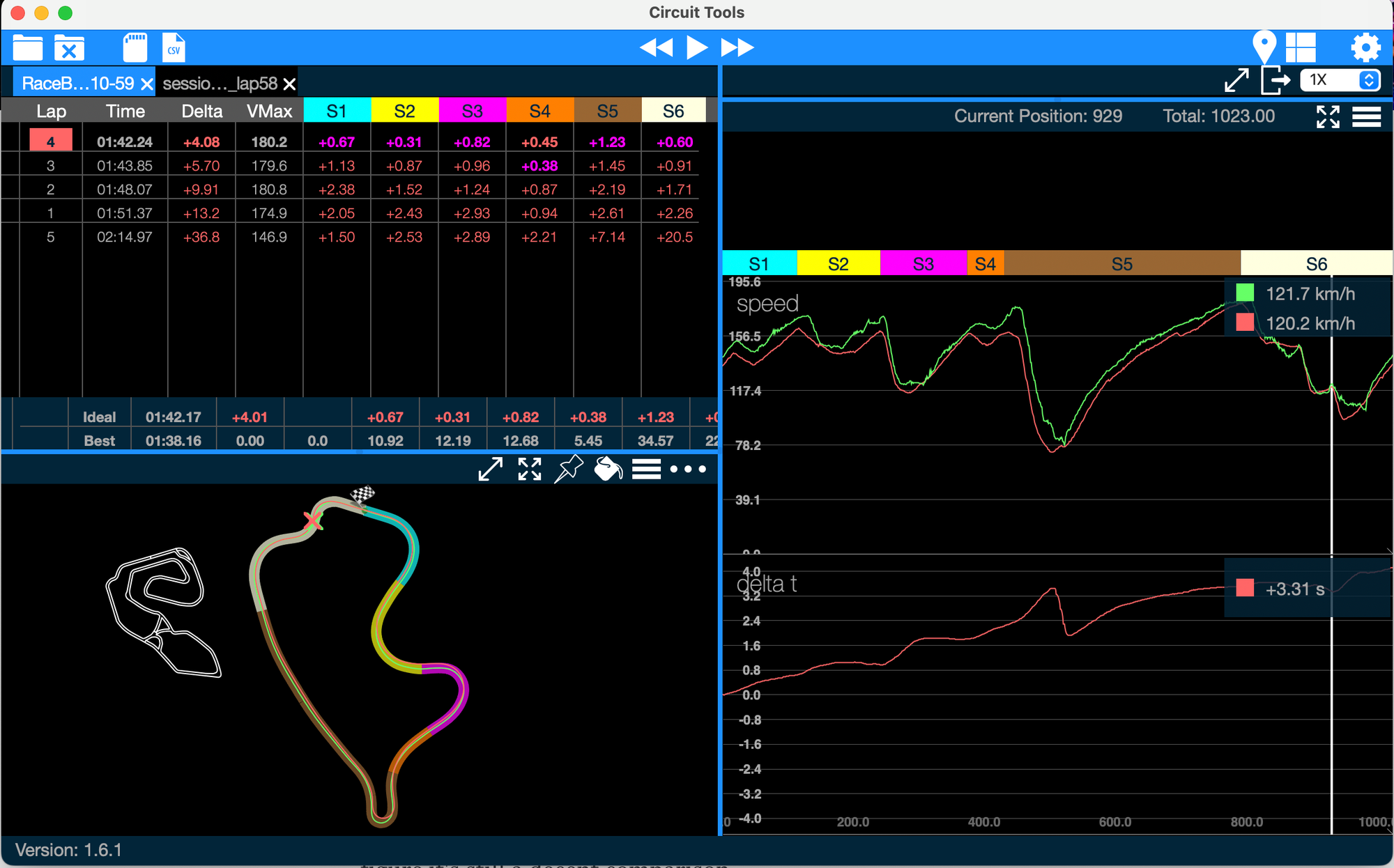
The conclusion I draw from this comparison I think are similar to what I've been over already. I lost time in the first half of the track, specifically turn 2 and 3. But closed the gap a bit through 5 and up the straight.
Based on what I can foresee, this marks the end of my Motorsports season for 2025. Moving in to 2026, I want to remove some of the variability from the setup of the car. If you look at the rest of the laps in these sessions that I'm analyzing, you'll notice that many of the times aren't even close to each other. This can sometimes be chalked up to traffic, but other times can be up to me looking down at my oil temp gauge and seeing 130 degrees, or nursing weird issues with fuel pre detonation.
I want to get the car to the point where it is consistent throughout the season. Changing the set up between the only two track days I got at this track makes it hard to see patterns in the data. Am I developing myself as a driver? Or am I simply making changes to the car without understanding them?
Yes, I understand conditions will affect lap times from one day to the next, but I can't control that. What I can control is if the car is different or not, which will help me to determine if I am different, or not.
Cat Tax.
